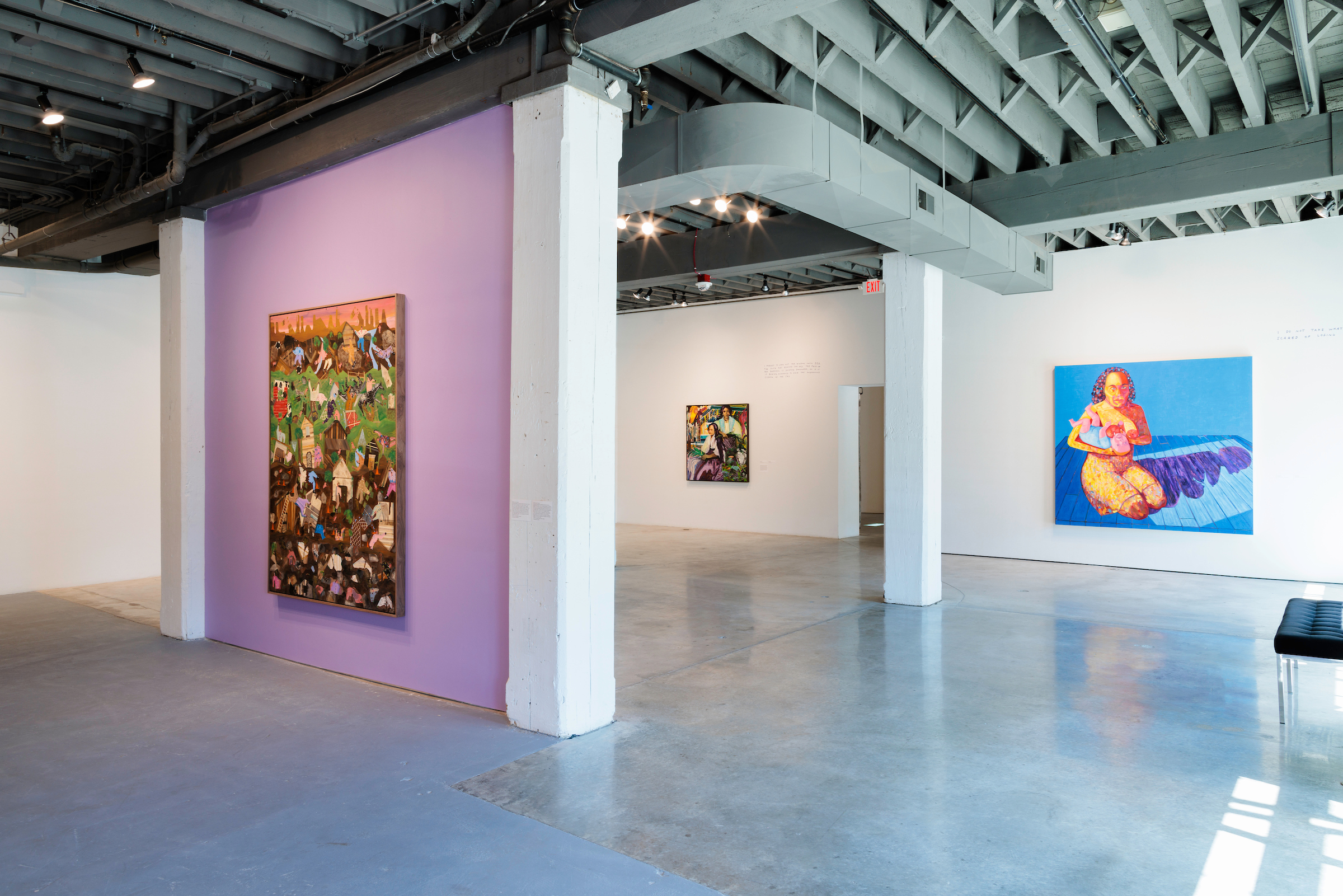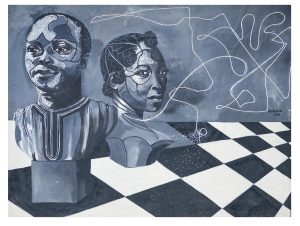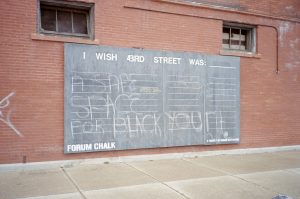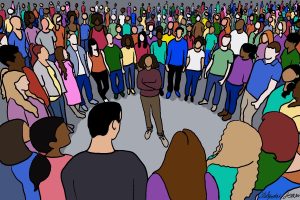
This piece was created through the Critic-in-Residence program at Bemis Center for Contemporary Arts. This new partnership offers an opportunity for a Sixty writer to visit Bemis Center and write a new piece that interacts with one of their current exhibition. The resident also has the opportunity to engage with the many talented artists-in-residence at Bemis Center as well as a local arts writer in order to get a fuller understanding of the arts in this region. Located in Omaha, Nebraska, Bemis Center facilitates the creation, presentation, and understanding of contemporary art through an international residency program, exhibitions, and educational programs.
I have a body which means I have needs.
I am making money from home. I am working from home. I am working in the space where I eat, shit, and sleep. I am working inside of the space I am working to afford to exist in.
She fell asleep in the middle of the day. She felt bad about this, it was unproductive. Her body had needed it, but she had forgotten about her body long ago. Her body was at war with the system. Her body expanded and the system shamed it until it shrank again…actually wait, I want to resubscribe to longing.
HOUSE.
Chaotic with clutter, this small house. So much to touch we don’t even reach out anymore.
I’ll take your hands in mine, and they’ll be warm. I’ll kiss your hands. I’ll make you feel real if you can make me feel real back.
We all got fucked by someone twenty years ago. But look at us now. On top of the literal world, aglow with the American Dream.
I love the library so much, in the same way that I love my own family: a love that is governed by both passion and necessity. Without you, I would be unstable. Unmoored. I do not take what I need because I am scared of losing what I have.
We wanted to get away. Each traveling somewhere warm in our minds.
I go back to my childhood home, and I nuzzle in like I always do. I tuck right in to all my previous selves.
— A restitched assemblage of words and phrases from “Feed” by Molly Prentiss
I am skeptical of figurative painting shows. Often, they generalize each artist under “figurative” and “painting.” Why is it trendy for these exhibitions to pop up everywhere? These shows go hand-in-hand with diversity efforts to include more about identity, but the commodity of identity worries me. No matter the origin of these shows, fantastic artists always stand out. As Steph Rodney would say, like raisins in the potato salad. Despite my skepticism about their conception, I have immense gratitude for where the paintings in Presence in the Pause: Interiority and its Radical Immanence transport me.
Named after the greatest place of sacrifice, Danielle McKinney’s Calvary shows a Black femme in repose presumably at the end of the day with a cigarette in hand. How the olives, turquoises, browns, whites, and tans interplay make the painting very sensuous and smooth like a pause: a moment in time that is the most intimate and somewhat baptismal: bathing. She looks away from the gaze, resting her eyes or in deep thought.
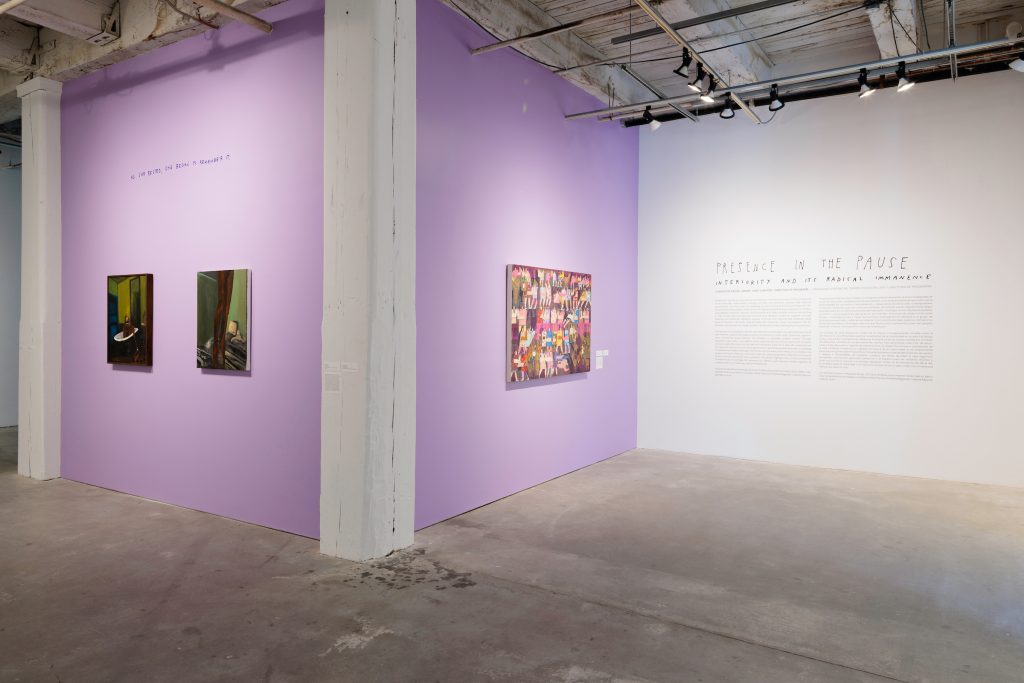
When my maternal grandmother had cancer the first time, I vividly remember helping to bathe her. She is someone embarrassed to swallow pills (arduously) in front of others, but something, maybe even the thought of dying, numbed her mind enough to not think of her teenage granddaughter bathing her. Beautiful birthmarks and freckles danced across her body, and her thin yet soft hair emerged like moss from a tree. In this moment, I partook in a reversal of how she used to bathe my brother and me as children. In it, I witnessed an existential moment that is typically one of solitude, that at once becomes sacred. She and my mom remind me that our bodies are temples.
In my thick blue photo album where I keep old Polaroid and disposable camera film, there is a photograph of my paternal grandmother bathing in a blue tub smiling. This is pre-aneurysm or just after (I can barely remember). But it was a moment worth capturing. As she hides her breasts with her arms, her exuberant smile indicates that she is happy in that moment of what many call routine, she sees as ritual.
Similarly, Danielle McKinney’s Fly High, isolates a specific moment in time. The bedroom environment matters less than the cropping of the feet and legs floating in the air. Long soaring deep chocolate legs and toes with pink nail polish appear, reminding me of The People Could Fly (1985) by Virginia Hamilton—a folktale of magical Africans that were taken in chains to the Americas and shape shifted to camouflage their wings. At the height of their oppression, they summoned the magic that existed within themselves to fly above. It was the last stage of metamorphosis: returning to home.
While before, I may have disregarded the background, its bare details are important enough to show the bed, the place of dreams, as being where one can truly fly. In dreams, we only answer to ourselves and our conscience. Or perhaps, she explicitly jumps on the bed (Black parents don’t play that). At times, I used to sneak to do that or flop on my (Black) Barbie covers. Either way, it is important to note that we see her in a moment of flight—unabashedly airborne—answering only to her own weightlessness. There is zero gravity keeping her down.
Rays of light come in from a window blinder giving the body of another femme figure a warm embrace. The hug of the rays reminds me of Akenanaten when he personified the sun with long arms and hands touching his family with divine splendor. On days when I need a break from independent work at home, especially in fall or winter, I lay on my area rug and let the sun stream onto my body in a similar way. It warms me up from the outside in. Ecothermy. I love the feeling of sun rays on my body.
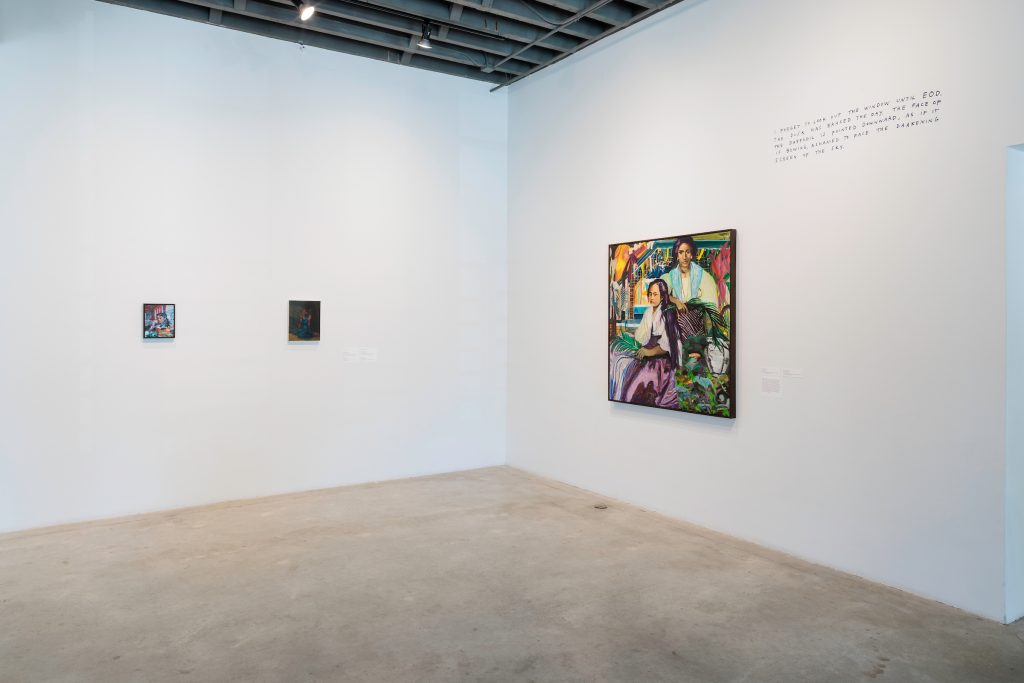
That is what I see in Danielle Mckinney’s Twilight. Everything about it is luxurious and self-gratifying. It almost beckons, the spotlight is mine and it warms my body the same way physical touch would. The same smooth color palette abounds but does not seem monotonous. It feels like a frozen moment in sepia.
In all three works, there’s a warmth. Is it from the fuzziness of daydreaming and sunbathing? Or perhaps, romanticizing life, falling in love with self, and embodying the words of Ayisha Siddiqa, NY-based environmental activist, who writes of sentimentality in our climate-changing world, “How rare and beautiful it is that we exist. What if we stun existence one more time?”1 What if we took advantage of each moment? With that mentality, a second is a song, a minute is a gift, an hour is filled with possibility… It slows down time and shifts it to the divine concept of a day is as a thousand years.
Preetika Rajgariah also creates the extraordinary out of the ordinary. Lululemon yoga mats with a ghost of the brand symbol transform into elegant bodies with a collage of splendent saris material. Starting with the canvas of a yoga mat, Rajgariah reclaims the reverence of yoga of Davidic worship from Western New Age practices. In Sanskrit, yoga translates to joining or union. This union is between mind and body, individual and universal consciousness, and man and nature, an apropos theme throughout the work.
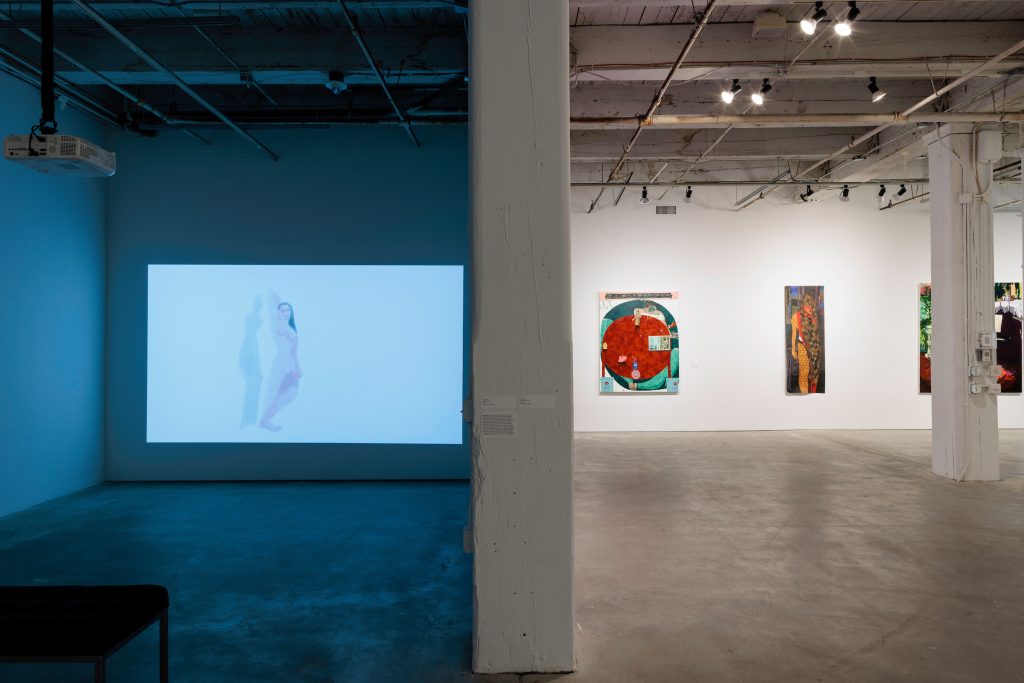
In nature does not hurry yet everything is accomplished, on three-paneled yoga mats, a dark skinned purple figure reclines. The pose is the I-just-woke-up-but-I’m-too-comfortable-to-get-up state. However, there’s a striking repetition of playing cards arranged like the end of the game of solitaire. My mother has always been a game guru: from Solitaire (which she still plays) and Minesweeper to Angry Birds, Galapago, Bejeweled, and Candy Crush. As a child, I always wondered how and why she was so good at electronic and analog games. But besides retail therapy, this allowed her to fill up slow interludes with dopamine and self-pleasure. She did the same with dancing and singing even if she does it alone or is off key. That’s exactly what I see in this work.
Each person has the autonomy to reveal parts of themselves at their will. Know the unknown, hear the unheard, see the unseen reminds me of body autonomy and willpower. Holding onto secrets is one of the most intimate things. The figure stands draped in cloth, showing one leg, one arm, and parts of their chin. The rest they obscure. Their refusal to meet our gaze is an act of self-love which (Saint) Audre Lorde equates to self-preservation. I imagine what conversations the paintings have amongst themselves when art spaces are closed.
Even the title suggests that the figure is omnipresent, omniscient, and omnipotent as the revealer and guarder of secrets. They are standing in front of a stool like they have just emerged from sitting—awakened to their power and strong presence. Looking upon Medusa, meant equal power, she took autonomy back and put others into their place by turning them into stone. A gaze, a leg, an arm, are all powerful revelations of the unknown and powerful body. The body is a temple.
Rachel Adams, Chief Curator and Project Director at Bemis, says that she enjoys working at a non-collecting institution. It stuck with me when she said instead of caring for a collection, she cares for people. Care for others and ourselves is the true theme of these so-called figurative painting shows. In the careless world, there is a need for this. Why else would a theme emerge over and over again in different places? It echoes bell hook’s maxim: to transgress we must return to the body.
[1] Ayisha Siddiqa, “On Another Panel About Climate, They Ask me to Sell the Future and All I’ve Got is a Love Poem,” OnBeing, Poem originally published by The Eco Justice Project, June 10, 2022, https://onbeing.org/poetry/on-another-panel-about-climate-they-ask-me-to-sell-the-future-and-all-ive-got-is-a-love-poem/
Presence in the Pause: Interiority and its Radical Immanence is on view at Bemis Center for Contemporary Arts from May 20 through September 17, 2023.

About the author: Chenoa Baker (she/her) is an empathetic curator, wordsmith, and descendant of self-emancipators. Equity and collectivism are the core tenants of her curatorial work. She empowers a range of clientele — individuals, firms, and institutions — to elevate their social impact, publication, and exhibition projects. She is the current Associate Curator at Beacon Gallery. Her independent work includes a wide repertoire of shows: Gio Swaby: Fresh Up at the Peabody Essex Museum; Simone Leigh at ICA/Boston and Simone Leigh: Sovereignty at the 59th La Biennale di Venezia; and Touching Roots: Black Ancestral Legacies in the Americas at MFA/Boston. Her autobiographical-style art criticism appears in Boston Art Review, Helena Metaferia: Generations, Art For This Moment, Burnaway, Art & Object, Black Art in America, and Sugarcane Magazine.
